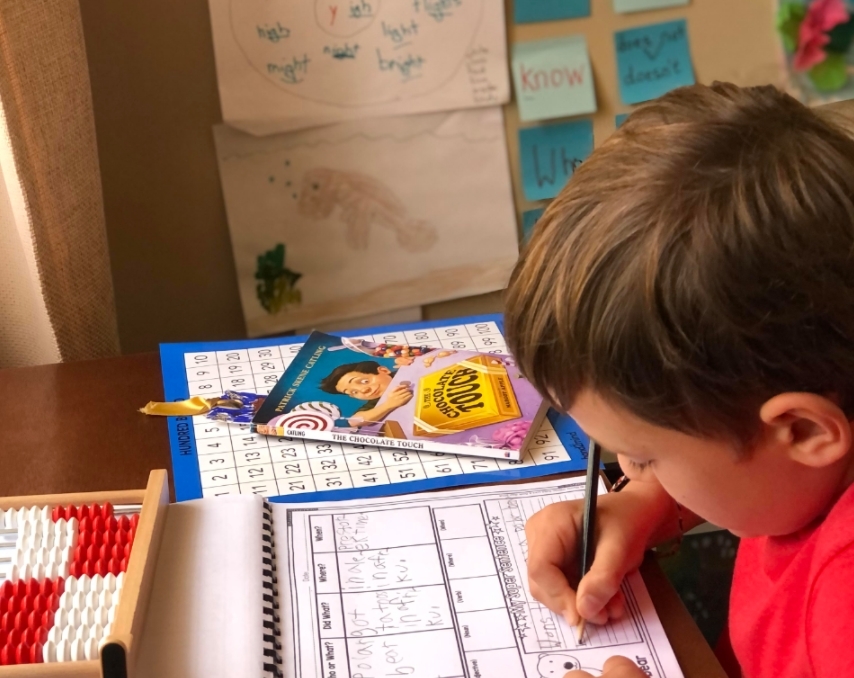How to Have a Calm School Year By: Lucas Greenbaum (7 years old)
This year we have watched our children log on to school, manage their virtual schedule and navigate various platforms such as Google Classroom, Schoology like champs. However, even with their super power levels of flexibility and patience, there were many challenging moments or before, during and after their distant learning school day.
Having to shift from being a student to a “virtual learning student” overnight is something we will never understand. Students who loved going to school last year, started their days this year with tears of frustration saying, “I hate school”. Their self-identity and perception of a smooth, comfortable school day was pulled out from under them and replaced by a scratchy wool rug. All of the sudden math class became extremely frustrating when it used to be a favorite subject. Art projects that were once a highlight of their week became an overwhelming and dreaded task causing levels of anxiety they never felt before.
This year was incredibly stressful for even the most resilient child. My child included. Lucas is an outgoing 1st grader who loves learning, laughing and LEGOs. He is very proud of the title given to him from his Preschool teacher as the “class mayor”. Needless to say, school is one of his happy places, but this year was different.
We had the opportunity to send Lucas to an incredibly charming charter school filled with an amazing teaching staff. However, being in the LAUSD, we knew we were stuck with the scratchy wool rug for most of the year. So we had to figure out how we were going to get through what he called the “Zoom-Doom School” year.
How do you support someone who feels like things are unraveling? You give them structure and connection. One way to do this is to make lists with your child so they have a sense of ownership in the process. When I shared with him I was writing this blog today, he insisted I tell parents about this list he’s created because it is important to other kids to know that they are not alone in their feelings of frustration this year. He also titled it himself.
Ten Tips to Have a Calm School Year
- Celebrate and reward your child for their hard work.
- If they have younger siblings make sure they don’t distract them.
- Take deep breaths.
- If they are having too much candy, give them fruit and other natural sweet things.
- If they are watching too much TV, have them go for a walk.
- Make a feelings scale and use it to check on each other throughout the day.
- If your child wants more toys, take half of their toys and store them away for a month. Then, they can switch them out and it feels like new toys.
- If you and your child are both getting frustrated with each other about school work, have someone else come over and help.
- If your child feels bored, help them use their imagination. Get cardboard boxes and make a spaceship or get a roll of paper and let them draw whatever they want.
- If they are feeling sad, a hug always helps. In fact, hugging someone for 30 seconds always makes them feel happy.
Another quick and easy way to provide support for your child is to take their temperature- emotional temperature. Lucas and I created a “Feelings Temperature” chart. We use it more than I expected. It comes from the SUDS (subjective units of distress/disturbance scale) or the kid’s version called the Feelings Thermometer.
“The SUDS was developed by two of the founding fathers of behavior therapy—Joseph Wolpe and Arnold Lazarus—over 50 years ago. It has stood the test of time because it is simple and easy to use. The SUDS is a 0- to 100-point scale, with higher numbers indicating more anxiety/greater discomfort.”
When using it with younger students, I suggest reducing the range from 0-8 instead of 0-10 and allowing the child to personalize it with their own language “not scary” to “freaking out”. The goal being to help the child start monitoring their levels of anxiety and then implementing management strategies.




